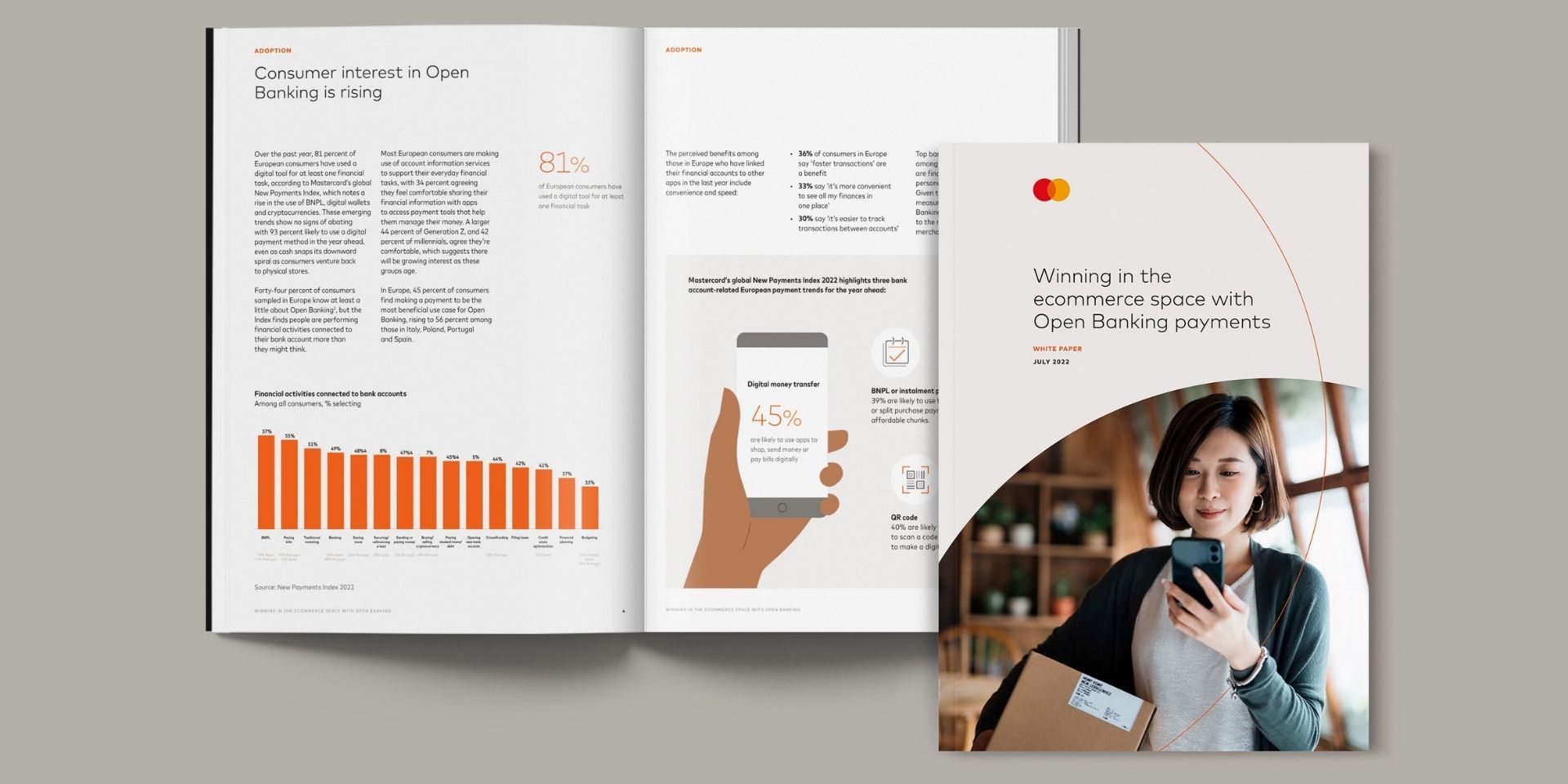The way we shop and pay has evolved dramatically over the past few decades as first instore card payments and then online purchases from our clunky desktops began to offer much greater convenience.
Now, the world of commerce is evolving to a truly omnichannel experience that’s driven by emerging technologies including open banking, as a wealth of payment choices stack up alongside traditional cards to enable seamless ways for people to pay.
Open banking retail payments offer a win-win for merchants and their customers. They can lower costs, reduce fraud and increase conversions, while offering consumers greater choice, convenience and transparency at the point of purchase.
To explore how merchants can win the ecommerce space with open banking payments, we’ve created a brand new report.
Consumer interest in open banking is rising
According to Mastercard’s global New Payments Index, 81 percent of European consumers have used a digital tool for at least one financial task over the past year, which notes a rise in the use of BNPL, digital wallets and cryptocurrencies.
These emerging trends show no signs of abating with 93 percent likely to use a digital payment method in the year ahead, even as cash snaps its downward spiral as consumers venture back to physical stores.
In Europe, 45 percent of consumers find making a payment to be the most beneficial use case for open banking, rising to 56 percent among those in Italy, Poland, Portugal and Spain.
The perceived benefits among those in Europe who have linked their financial accounts to other apps in the last year include convenience and speed:
- 36% of consumers in Europe say faster transactions are a benefit
- 33% say ‘it’s more convenient to see all my finances in one place’
- 30% say ‘it’s easier to track transactions between accounts’
How do open banking payments work?
Unlike more traditional payment options, open banking allows anyone with a bank account to initiate swift and secure digital payments which arrive almost immediately to a retailer’s account. It’s a simple process: After selecting their items and heading to checkout, customers select the option of paying directly from their bank to initiate the payment process.
They select their bank in the payments window and then authenticate themselves using their secure password or biometric information. For consumers, hitting the payment button is the final step in the process that quickly sends the payment instruction to the bank which will then send the funds from their bank account into the retailer’s account.
Giving retailers faster access to funds can improve their cash flow management and help them cover essential costs such as rent, wages and utility bills.

Recently, Mastercard broadened its open banking payment services with the launch of the Pay by Link option, which allows businesses, including merchants, to send payment requests via text message, QR code or email to their customers, who can pay directly from their bank account with a simple authorization. All payment information is included in the request, reducing the risk of error and bringing greater convenience to consumers and businesses alike.
Acquirer and gateways that partner with Mastercard can integrate its white label solutions into the retail experiences they have already created for their merchant customers. The global, trusted network provides connectivity across 18 European Union markets and gives customers the opportunity to use open banking to optimise their workflows and add fresh revenue streams
Download the full report or drop us a line to learn more about your open banking opportunities with Aiia.




